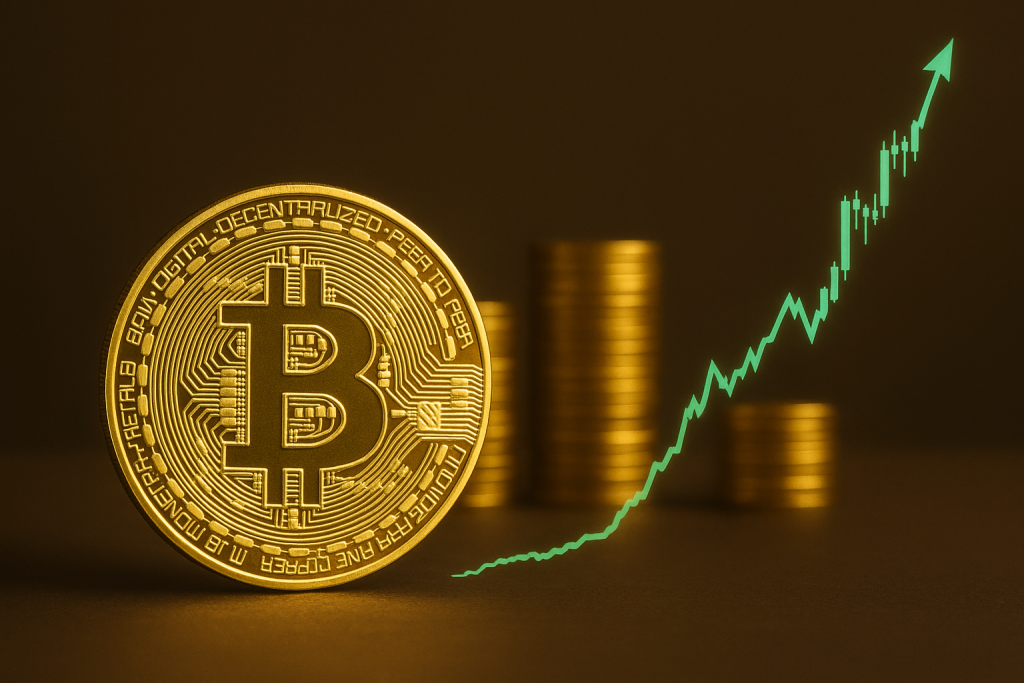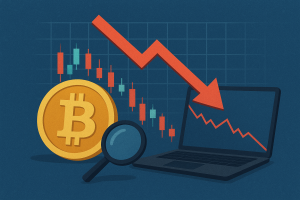Introduction
On October 5, 2025, Bitcoin, the world’s leading cryptocurrency, achieved a monumental milestone by surpassing the 125,000 USD mark. This record-breaking price level is a testament to Bitcoin’s enduring appeal as a digital asset, driven by multiple factors ranging from institutional inflows to global economic developments. Investors, analysts, and enthusiasts across the world have been closely watching this rally, which reflects a shift in the financial landscape toward greater acceptance of cryptocurrencies as mainstream assets. The surge underscores not only Bitcoin’s resilience over the years but also the growing recognition of its potential as both an investment vehicle and a hedge against economic uncertainty.
Bitcoin’s price performance in recent weeks has captured global attention, as the cryptocurrency market overall has seen significant inflows and renewed interest. Institutional investors, who once approached the market cautiously, are now playing an increasingly influential role. Meanwhile, favorable regulatory developments and economic uncertainty in traditional markets have added fuel to the rally. As a result, Bitcoin is not only breaking records in terms of price but is also solidifying its place as a key component in global financial markets.
Institutional Inflows As A Primary Driver
A significant driver behind Bitcoin’s surge past 125,000 USD is the influx of institutional capital. Over the past year, traditional financial institutions, hedge funds, and family offices have increasingly allocated funds to Bitcoin. Data from the week ending October 3, 2025, indicated that U.S.-listed spot Bitcoin exchange-traded funds (ETFs) recorded a net inflow of approximately 3.24 billion USD, marking one of the largest weekly inflows in the asset’s history. This demonstrates the growing confidence of professional investors in Bitcoin’s long-term value proposition.
Institutional interest has been further encouraged by the Federal Reserve’s policy decisions earlier in the year. Rate cuts and a more accommodative monetary stance have reduced yields in traditional assets such as bonds and savings accounts, pushing investors to seek alternative investment opportunities. Bitcoin, with its limited supply and decentralized nature, has become an increasingly attractive option for those looking to diversify portfolios and hedge against fiat currency depreciation.
Moreover, institutions are not just investing passively; many are incorporating Bitcoin into broader strategies such as treasury management and corporate balance sheets. This trend has been exemplified by several multinational companies announcing purchases of Bitcoin for liquidity and investment purposes. Such moves by large institutions not only provide immediate buying pressure but also signal market confidence, encouraging other investors to participate in the rally.
The Role Of Regulatory Developments
Another key factor contributing to Bitcoin’s historic rally is the evolving regulatory environment. Governments worldwide are recognizing the potential of cryptocurrencies, and certain nations are actively implementing policies to encourage innovation while ensuring consumer protection. In the United States, regulatory clarity has improved under the Trump administration’s measures, particularly with the establishment of the U.S. Strategic Bitcoin Reserve in March 2025. This initiative is designed to promote digital asset leadership and provide a framework for integrating cryptocurrencies into the national financial system.
Additionally, the administration has taken steps to reduce friction for major cryptocurrency exchanges by requesting pauses in ongoing legal proceedings and creating a more business-friendly environment. This increased regulatory certainty has enhanced investor confidence, allowing institutional and retail participants to enter the market without excessive fear of regulatory crackdowns.
Globally, other regions have also contributed to Bitcoin’s legitimacy. Countries in Europe and Asia have launched clear frameworks for digital asset trading, investment, and taxation. Such coordinated efforts reinforce Bitcoin’s position as a globally recognized financial asset, making it easier for cross-border investors to participate without facing significant compliance challenges.
Macroeconomic Influences And Global Risk Appetite
Global economic conditions have also played a crucial role in Bitcoin’s price rally. Recent geopolitical and domestic events have increased uncertainty in traditional markets, driving investors toward alternative assets. The U.S. government shutdown that began on October 1, 2025, created temporary disruptions in conventional financial markets, prompting investors to explore safer stores of value, including Bitcoin.
Concerns about a weakening U.S. dollar have also fueled interest. With inflationary pressures and central bank policies affecting fiat currencies, Bitcoin is increasingly perceived as a hedge against currency debasement. This perception has been reinforced by the cryptocurrency’s historical performance during periods of economic instability.
Investor sentiment has been bolstered by reports of a renewed global risk appetite. As traditional markets recover from volatility earlier in the year, risk-on behavior has spilled over into cryptocurrency markets. Investors are now more willing to allocate funds to high-potential assets like Bitcoin, contributing to the rapid appreciation in its price.
Bitcoin’s Growing Role In The Global Financial System
The recent surge in Bitcoin’s price has elevated its importance in the broader financial ecosystem. As of October 5, 2025, Bitcoin’s market capitalization stands at roughly 2.45 trillion USD, contributing to an overall cryptocurrency market valuation exceeding 4 trillion USD. This places Bitcoin among the most valuable financial assets worldwide, surpassing the market capitalization of some of the largest multinational corporations.
This growing financial significance is also reflected in the increasing integration of Bitcoin into mainstream investment portfolios. Investment banks, mutual funds, and ETF providers are incorporating Bitcoin as a component of diversified portfolios. Central banks in certain jurisdictions are exploring ways to include Bitcoin in reserves or use it as a tool for payment settlements. Such developments indicate that Bitcoin is no longer a fringe asset but a recognized part of the global financial architecture.
The cryptocurrency market itself has matured significantly. Technological advancements in blockchain, improved security protocols, and better infrastructure for trading and custody have all contributed to Bitcoin’s growing credibility. These factors, combined with rising adoption, are making Bitcoin a more reliable and accessible asset for a wider range of investors.
Market Implications And Future Outlook
Bitcoin’s new all-time high opens discussions about its future trajectory. Analysts are divided on short-term corrections versus long-term growth potential. Some experts suggest that the rally may attract profit-taking in the near term, potentially leading to minor market fluctuations. Others argue that institutional participation and global adoption will continue to provide sustained upward pressure.
Looking ahead, Bitcoin is expected to benefit from continued adoption by both retail and institutional investors. Innovations in decentralized finance, tokenized assets, and payment solutions are expanding the use cases for Bitcoin. Additionally, the increasing presence of government-backed initiatives and ETFs will likely enhance liquidity, stability, and market depth.
However, potential investors should be aware of the inherent volatility in cryptocurrency markets. While Bitcoin offers significant growth potential, it is also subject to rapid price swings, regulatory changes, and macroeconomic events that can affect its valuation. A cautious and informed investment approach is essential to navigate the dynamic landscape of digital assets.
Conclusion
Bitcoin’s breakthrough past 125,000 USD on October 5, 2025, reflects a combination of factors, including robust institutional inflows, favorable regulatory developments, global economic uncertainty, and increasing adoption worldwide. This milestone not only highlights Bitcoin’s resilience but also underscores its growing role as a recognized and mainstream financial asset.
The confluence of institutional interest, regulatory clarity, and macroeconomic dynamics has created a favorable environment for Bitcoin to thrive. As it continues to gain acceptance among investors, corporations, and governments, Bitcoin is solidifying its position in the global financial ecosystem. While volatility remains a characteristic feature of cryptocurrency markets, the long-term outlook for Bitcoin appears increasingly positive, with widespread implications for the future of finance.



